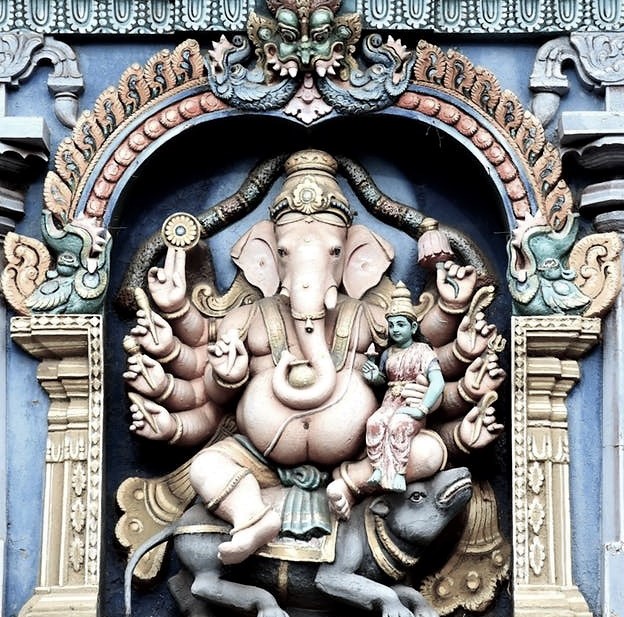- Special FeaturesFoundation Year11th to 12th century CESthala TreeTheerthamRathamArchitectureOther Speciality
- Sthala Puran
Panagal is a historic site, oft referred to as Panugullu and Panagullu in pre-14th century inscriptions and texts. The earliest records mention it as one of the regional capitals of the Kadumba dynasty, from where governors and kings of Andhradesa ruled this part of Dakkhina-kshetra (Deccan-region). The history of Panagal is evidenced by numerous inscriptions found on stones, panels and fragments of panels found near the temple, in the farm fields and on some broken panels found with Muslim tombs.[7] Inscriptions in other parts of India, particularly in the Deccan region, such as the Mamillapalli inscription and the Ramalingala inscription affirm the importance of Panugallu. Some inscriptions call the local rulers by the site's name, as Panugallu-puravaresvara.
With Kirtivarman's conquest, the Chalukyas gained and nurtured Panagal, building some smaller temples in the Chalukyan style. It was one of three capitals for Chalukyas, the other two being Vardhamanapuram and Kandur.[8] Later the Cholas (Chodas), Yadavas-Seunas, and Kakatiyas ruled their regions in Telingana from their administrative headquarters at Panagal. In 1124 CE, Udayaraju of a branch of the Telugu Chola dynasty constructed a large water tank to the northeast of the town. Between about 1150 to 1250 CE, two major temples were built in Panagal, including the Chaya Someswara temple. There is no foundation inscription available at this temple, and the estimated date of completion vary by scholars. Dhaky and Meister date it to mid 11th-century based on the architectural style and iconography, attributing it to the Kunduru Chodas. Other scholars date it a bit later to early 12th-century.
- Architecture
The Chaya Someswara temple is actually a complex of shrines within a prakara (compound) wall built from large blocks of stone. The main temple is a trikuta shrine that was in ruins and now partially restored. It faces east. This temple has three entrances, with the one in south being the main larger entrance. Other than the main temple, there are six subsidiary shrines within the prakara walls. Two of these are located to the south of the main temple, three towards the west, and one in the north. These were likely added after the main temple because they lack symmetry in layout and differ in the architectural style from the main temple.[3]
The main trikuta temple shares a mandapa (pilgrim hall). Each side of the three-sanctum temple is an austere cube with plain walls. On each is a phamsana-type vimana superstructure, one of many types of Hindu temple architecture described in Sanskrit texts. Each cube has a nominal adhisthana of the manchabandha class, while on top of the vimana is the Dravida-ghanta, a feature so named in the Aparajitaprccha, an Indian Vastu Sastra text.
The ceiling blocks are carved, with the central section featuring ashta-dikpala and Natesa (dancing Shiva) in the center. However, the carving is smaller and more eroded compared to the one in nearby Paccala Someswara temple, likely because this feature was getting phased out of Hindu temples of Telingana by around 1100 CE. The antarala of each sanctum has a pair of pillars. The doorframes before each sanctum is simpler than the Paccala temple, yet enlivened by figurines at its pedyapinda section. The Chaya Someswara temple illustrates the square principle of Hindu architecture, in nearly every section, from its sanctums to mukhamandapa, rangamadapa, antarala, and in the vimana superstructure. Even the pillars, panels, niches and interior ceiling frames follow the square principle.
- Alankar of Deity
- Prayers and BenefitsSpecial Vratas and PrayersOfferings to DeityStotras and Mantras
- Festivals
- Sodasha Upcharas
- Prasadhas
- Social ActivitiesAnnadhanMarriageEar BoringHead ShaveDanaasEducation FacilitiesSocial DrivesOther Activities
- Arjita Seva
- Tags

